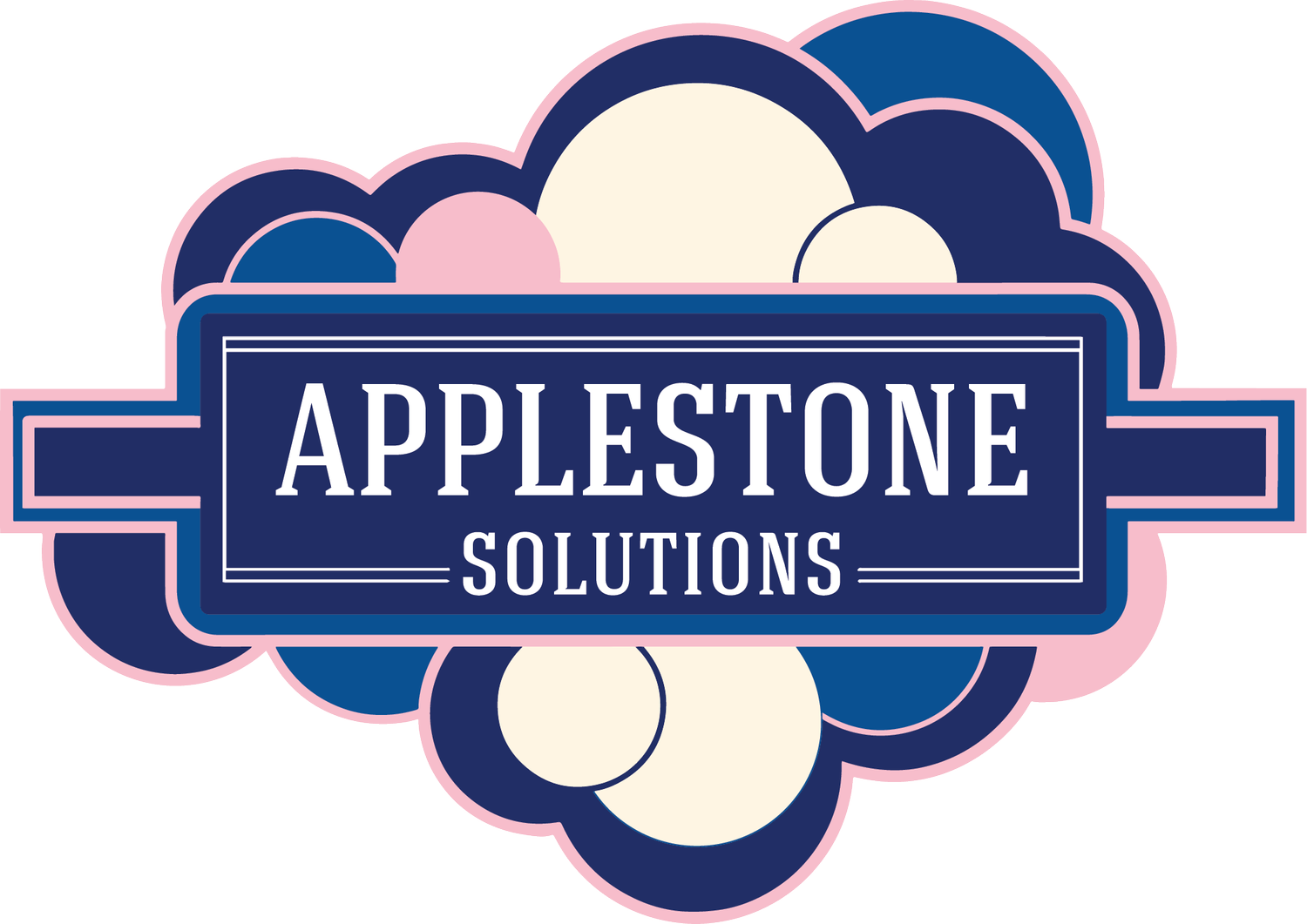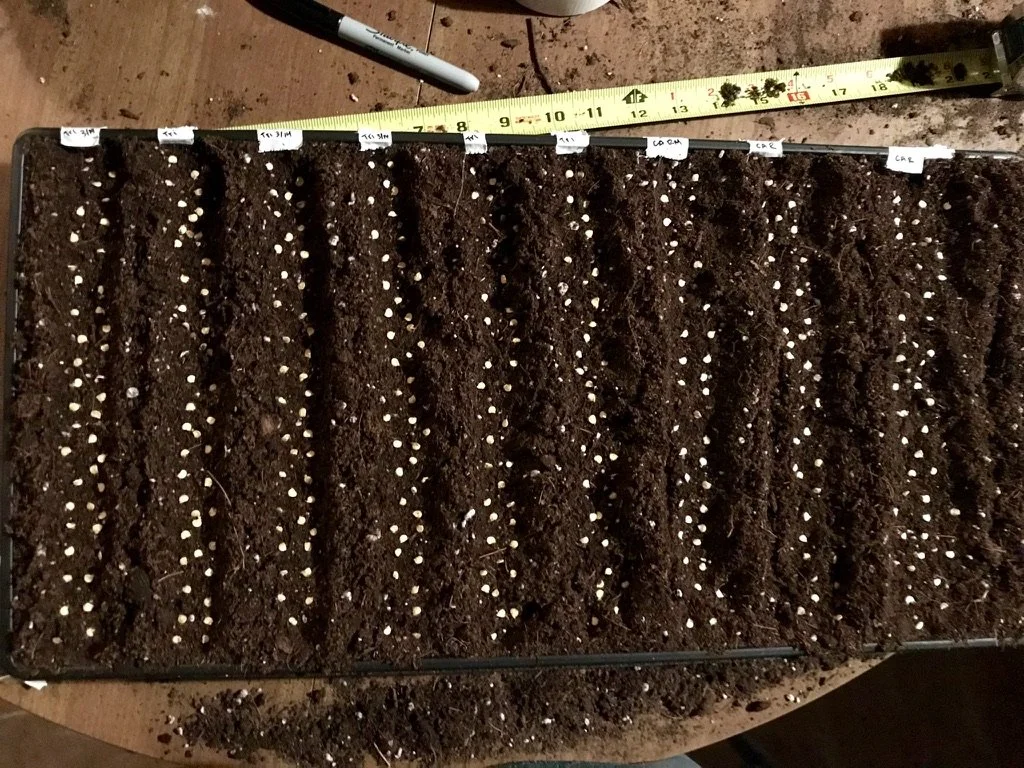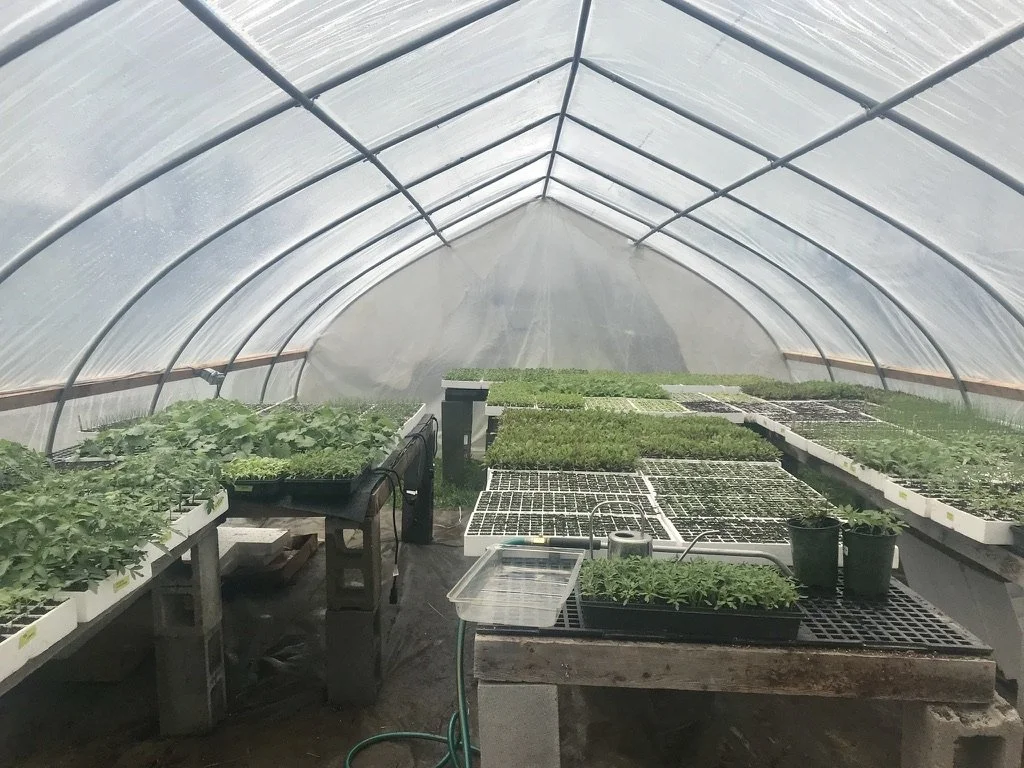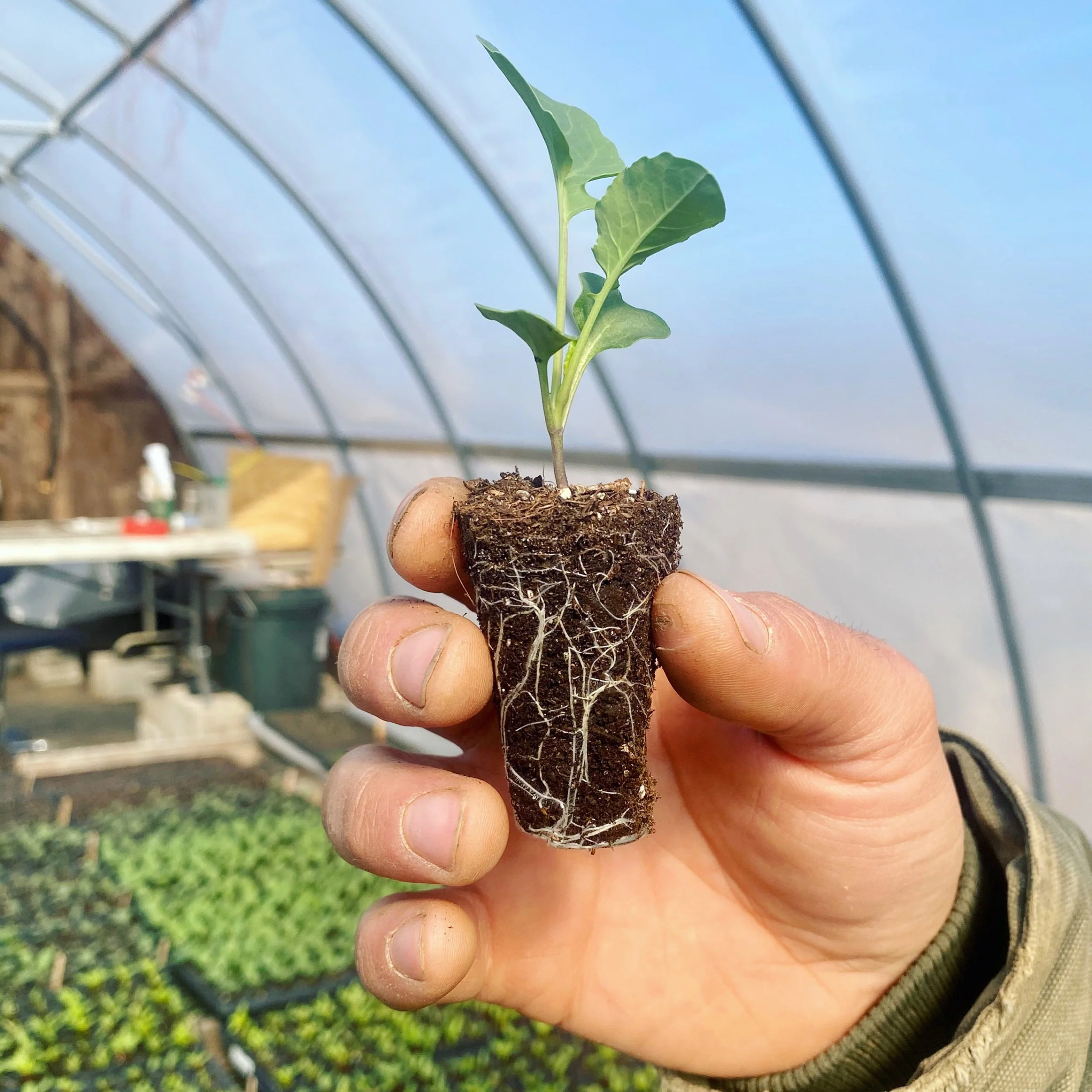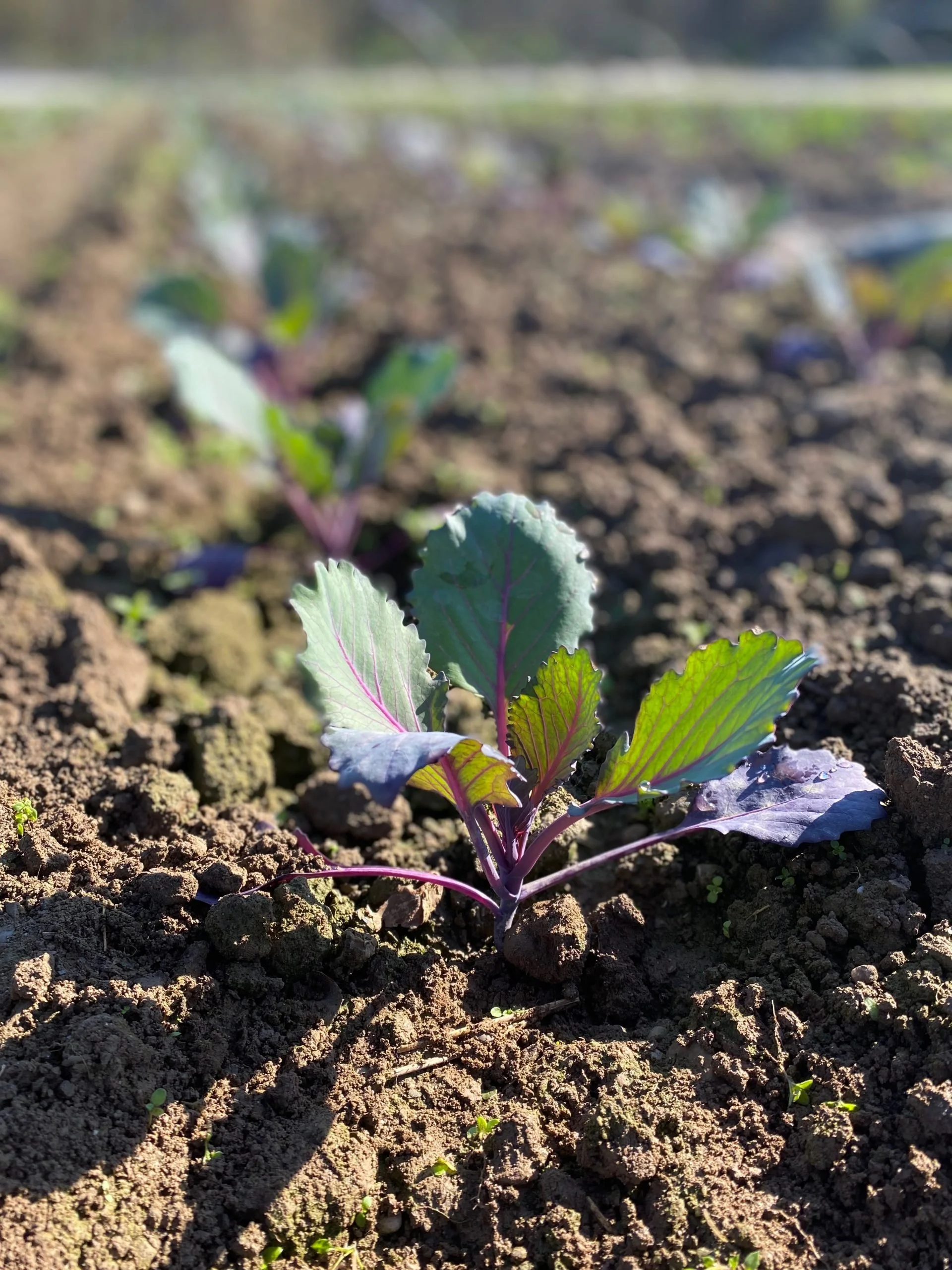Community: Supporting Local Farmers
Back in early March, we interviewed a few local farmers about what life on a farm before the growing season looks like. Our community is pretty supportive of our farmers. We turn out for farmers’ markets and we attend on-farm meals. But how much do any of us really know about what our farmers do to prep in the months before the rest of us devour our first bunches of arugula? Early spring, prior to the first harvest, is typically tough financially; the work has started, but the customers have not. Our goal was to listen and learn, and then to encourage the community to support local farmers early -- by buying farm cards or CSA shares -- as they prepped their soil and fixed infrastructure.
Planting seeds at Great Song Farm
Early March on Local Farms
First, we spoke to Maggie Thomas, who farms with Emily Eder at Great Song Farm in Red Hook. (Maggie also works at Applestone during the winter.) We also reached out to Hudson Valley newcomers Leah Munsey and Orlando Diaz at the Lo Farm; this is their first season working the Taliaferro land in New Paltz. And Sam Zurofsky at Long Season Farm in Kerhonkson shared his unique perspective as a year-round farmer. As pots of kale and cauliflower sprouts grew protected in greenhouses, we chatted about the effects of a warm winter with little snow, and what it might mean for soil moisture and erosion, plus pests. We discussed projects and maintenance: repairing greenhouses; sanitizing flats; chipping wood for keeping down weeds; and endless paperwork including making lists, ordering seeds, and paying taxes. The farmers shared thoughts on how tricky advertising and marketing are, and yearly fears of not getting enough members signed up. Maggie was building special “chickshaws” for chickens and considering a money-saving hack involving an air conditioner and an insulated space instead of buying a cooler. Leah and Orlando were getting to know new-to-them land, redoing a trailer to live in, and prepping to launch. Late February and early March are the low points of a year-round farm, so Sam was eager for the abundance of early spring vegetables on the horizon. There was some overlap in these conversations—mainly about weather. There’s some science but also a lot of art about the right time to place plants directly in the soil. And all the farmers looked forward to certain crops—watermelon for Maggie, cabbage (“the most underrated vegetable”) for Leah, broccoli for both Sam and Orlando.
March at Great Song Farm
Covid
But then the pandemic hit. You know the story by now. Every local food purveyor, us included, was sent scrambling. We never had a chance to share our farmers’ thoughtful early spring interviews. Until now. With local bunches of arugula at long last available, we checked back in with Sam, Maggie, Leah, and Orlando to see how they’ve been adjusting to growing and operating with Covid-19. We wanted to know how they’re operating in this new landscape and to share some resources on how to best support them and other local farmers. This is a painfully busy time of year for anyone working the land in the Hudson Valley. Add in a whole new way to harvest, sanitize, and sell—it’s a lot. Leah and Orlando rushed to launch their first season early, knowing their new community was clamoring for local food. You never know when skills will become useful; the duo had trained to be certified in food safety law regulation at a prior farm job. A few months ago, they described the training as “a farmer’s nightmare because it’s tons of paperwork and you have to log everything.” Fast forward and this training, when it comes to knowing how to set up hand washing stations, sanitize bins for produce tools, and create food safety plans that include harvest systems and post-harvest sanitation is a real plus. Their current on-farm pick-up plan is organized and thoughtful.
Getting bigger at The Lo Farm
Vote With Your Dollars
It’s more critical than ever to buy directly from local farms. What and how we buy now matters. Consumers are actually choosing what businesses will and won’t be around when we emerge on the other side of this pandemic. Our current reality has shed a spotlight on food production all over the world. Do we want to be able to have diverse local farms for many years to come? Or do we want to buy from bigger mono-crop farms that have to truck or fly their products everywhere? Personally, we really want the little farms. While it sounds like communities are coming out in droves to support local farms right now, the chef Dan Barber recently surveyed many farmers and concluded, “The current boom is a sweet illusion; the bust is coming fast.” He says people who care about eating food from local farms must act now to keep “big food” from taking the market back. It’s up to consumers to help create a framework for a regional food system. (Read this article to learn how Dan Barber thinks this can be accomplished.)
Local Resources
Growing season is a fantastic time to buy local. If you have freezer space, buy extra veggies and freeze them. Learn how to can. If you want a winter share, sign up early for one. And let your farmers know you would be interested in a winter share if they would offer one. Be more aware than ever of what your local farms have to offer and vote with your dollars for now, for years to come, and for generations to come.
Buy Direct
To find a local farm near you, check out Rondout Valley Growers’ food and farm finder. And take a minute to head directly to farms’ websites and start following them on social media. Everyone is quickly creating new sales channels. Maybe you used to only be able to buy eggs at the farmers’ market, but now you can drive directly down the road to a farm, pay with PayPal, and pick some up, like at Muddy Farm in Kerhonkson.
The Lo Farm
Word of Mouth
Community members might know something about local farms that you don’t. Ask. And read your local newspapers or virtual town resources. You never know when a farmer with extra seedlings might one-time offer them in a post on a village Facebook page. (That’s how one of us scored Evolutionary Organics tomato and basil seedlings last week!)
Farmers' Markets
They’re opening back up now, and many of them, like the beloved Kingston Farmers’ Market, have strict new shopping protocols, time slots, and even ways to pre-pay. Follow the new rules and enjoy.
Delivery Services
Hudson Valley farmers who normally sell at markets in New York City as well as to restaurants have been finding new ways to get their produce out to people. We are hearing of new delivery services weekly. Damn Good Honey Farm in Kerhonkson launched a local food delivery service to people within a 20-mile radius from their farm. They have a long list of local products—from produce to CBD pre-rolled hemp joints to cheese—to order from weekly. Remy’s Local has also launched a farmers’ market delivery service, bringing produce, cheese, and even fish to a wide swath of the Hudson Valley as well as New York City. Their site even has a way to donate money to feed a family in need, which is a lot of us these days.
Tomatoes, finally in the ground at The Lo Farm
